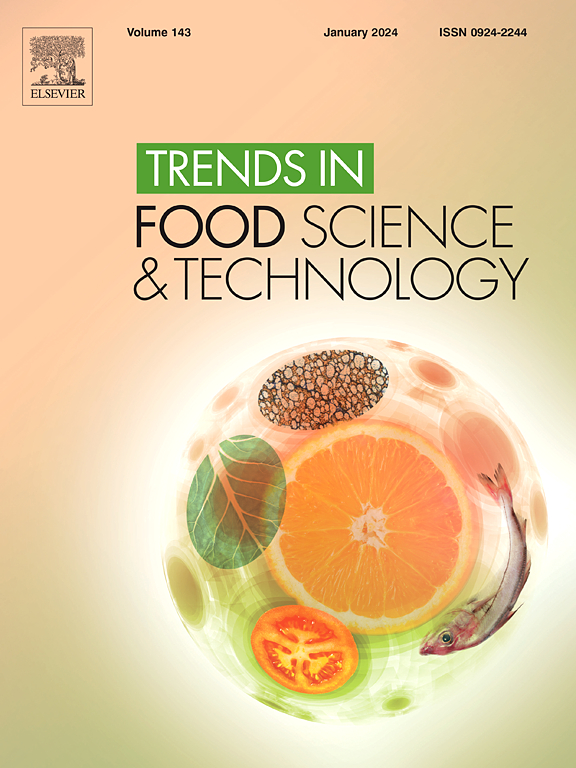Illustrating the amyloid web encircling humans
IF 15.1
1区 农林科学
Q1 FOOD SCIENCE & TECHNOLOGY
引用次数: 0
Abstract
Background
The human proteome contains thousands of different proteins. A generic feature of proteins is their propensity to aggregate and form amyloid fibrils under specific conditions. Amyloids are known as paradoxical for their roles in both pathological disorders and physiological functions. State-of-the-art detection techniques have revealed that more than 50 human proteins can intrinsically form amyloid under physiological or pathological conditions.
Scope
Besides being formed endogenously, humans can be exposed to amyloids through diet, infection, and amyloid-derived materials. It has been observed in the last decade that food proteins and, materials designed from proteins contain amyloids or amyloid precursors. Humans therefore, are surrounded by an unrecognized amyloid web.
Key findings and conclusions
In light of the fact that a timely diagnosis of pathological amyloidosis is crucial for a better prognosis, this commentary puts the need to investigate the amyloid network and its potential adversities. Moreover, given that amyloids are known to cross-seed and sequester related as well as unrelated proteins, this commentary lays the groundwork for a careful examination of the proteins circulating through human systems and suggests a primer approach to construct a stratagem.
求助全文
约1分钟内获得全文
求助全文
来源期刊

Trends in Food Science & Technology
工程技术-食品科技
CiteScore
32.50
自引率
2.60%
发文量
322
审稿时长
37 days
期刊介绍:
Trends in Food Science & Technology is a prestigious international journal that specializes in peer-reviewed articles covering the latest advancements in technology, food science, and human nutrition. It serves as a bridge between specialized primary journals and general trade magazines, providing readable and scientifically rigorous reviews and commentaries on current research developments and their potential applications in the food industry.
Unlike traditional journals, Trends in Food Science & Technology does not publish original research papers. Instead, it focuses on critical and comprehensive reviews to offer valuable insights for professionals in the field. By bringing together cutting-edge research and industry applications, this journal plays a vital role in disseminating knowledge and facilitating advancements in the food science and technology sector.
 求助内容:
求助内容: 应助结果提醒方式:
应助结果提醒方式:


